Identification and multimodal characterization of a specialized epithelial cell type associated with Crohn's disease
- PMID: 39169060
- PMCID: PMC11339313
- DOI: 10.1038/s41467-024-51580-7
Identification and multimodal characterization of a specialized epithelial cell type associated with Crohn's disease
Abstract
Crohn's disease (CD) is a complex chronic inflammatory disorder with both gastrointestinal and extra-intestinal manifestations associated immune dysregulation. Analyzing 202,359 cells from 170 specimens across 83 patients, we identify a distinct epithelial cell type in both terminal ileum and ascending colon (hereon as 'LND') with high expression of LCN2, NOS2, and DUOX2 and genes related to antimicrobial response and immunoregulation. LND cells, confirmed by in-situ RNA and protein imaging, are rare in non-IBD controls but expand in active CD, and actively interact with immune cells and specifically express IBD/CD susceptibility genes, suggesting a possible function in CD immunopathogenesis. Furthermore, we discover early and late LND subpopulations with different origins and developmental potential. A higher ratio of late-to-early LND cells correlates with better response to anti-TNF treatment. Our findings thus suggest a potential pathogenic role for LND cells in both Crohn's ileitis and colitis.
© 2024. The Author(s).
Conflict of interest statement
The authors declare no competing interests.
Figures
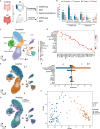
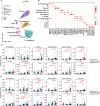
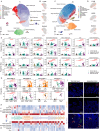

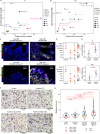
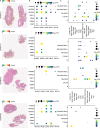

Update of
-
A Specialized Epithelial Cell Type Regulating Mucosal Immunity and Driving Human Crohn's Disease.bioRxiv [Preprint]. 2023 Oct 2:2023.09.30.560293. doi: 10.1101/2023.09.30.560293. bioRxiv. 2023. Update in: Nat Commun. 2024 Aug 22;15(1):7204. doi: 10.1038/s41467-024-51580-7. PMID: 37873404 Free PMC article. Updated. Preprint.
References
MeSH terms
Substances
Grants and funding
- UL1 TR000445/TR/NCATS NIH HHS/United States
- I01 CX002473/CX/CSRD VA/United States
- P30 DK058404/DK/NIDDK NIH HHS/United States
- UM1 CA183727/CA/NCI NIH HHS/United States
- P01 CA229123/CA/NCI NIH HHS/United States
- P01 CA116087/CA/NCI NIH HHS/United States
- P01 AI139449/AI/NIAID NIH HHS/United States
- P50 CA236733/CA/NCI NIH HHS/United States
- I01 BX004366/BX/BLRD VA/United States
- R01 DK103831/DK/NIDDK NIH HHS/United States
- G-1903-03793/Leona M. and Harry B. Helmsley Charitable Trust (Helmsley Charitable Trust)
- U54 CA274367/CA/NCI NIH HHS/United States
- R01 DK128200/DK/NIDDK NIH HHS/United States
- P30 CA068485/CA/NCI NIH HHS/United States
- I01 CX002171/CX/CSRD VA/United States
LinkOut - more resources
Full Text Sources
Medical
Molecular Biology Databases
Miscellaneous

